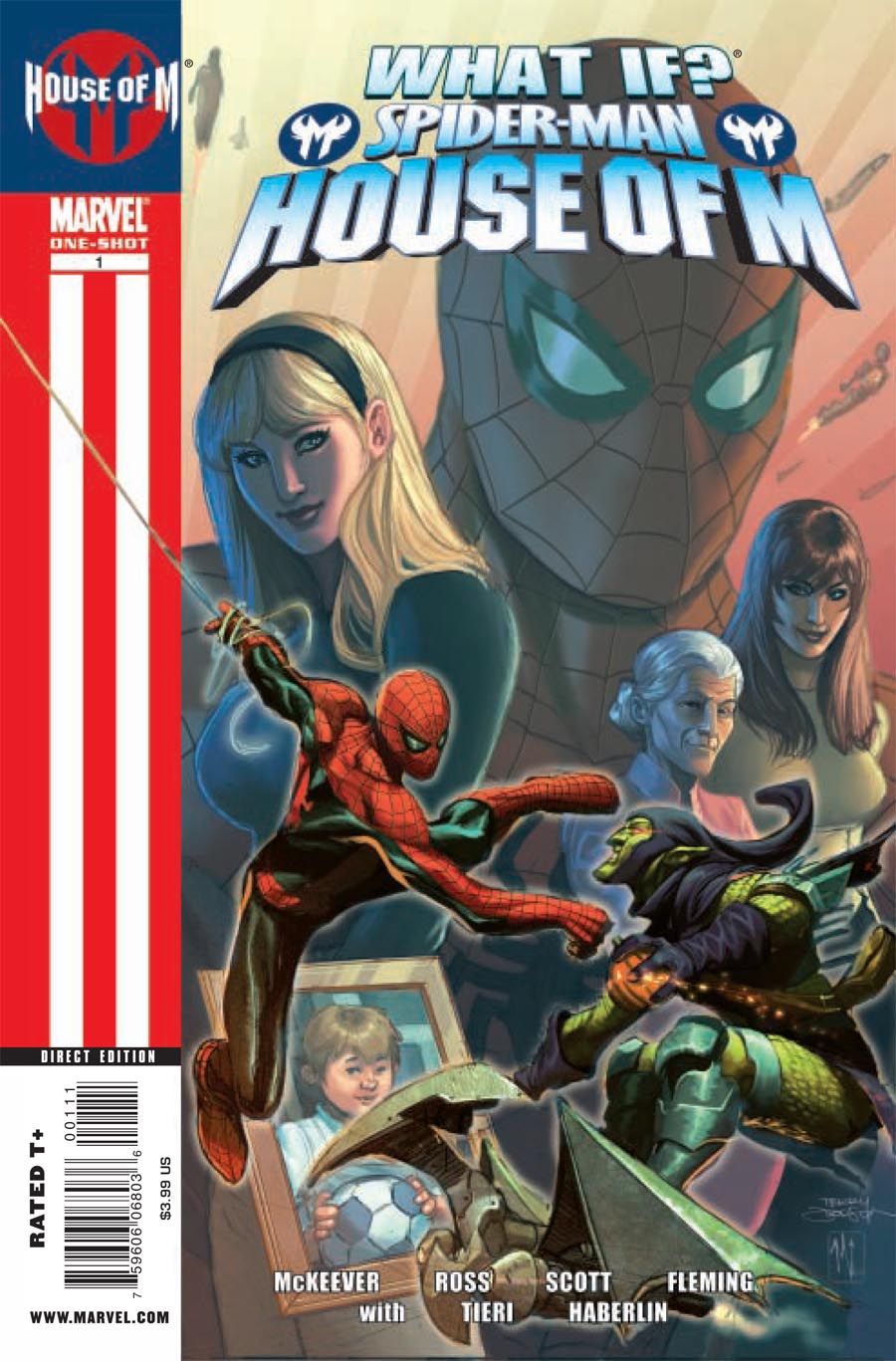One of the best and most heartbreaking parts of "House of M" was the 'wish come true' life that Peter Parker got to live and, then, that he would always retain knowledge of that perfect life where Uncle Ben never died, he and Gwen Stacey wed and had a son, and he was beloved and famous for being Spider-Man. The idea of exploring what would happen if the House of M Gwen managed to live past the end of "House of M" is interesting because of the conflict and emotional turmoil that seems to come with it, something that should work quite well. Sadly, neither story presented here manages to capture that or even tell an entertaining story.
In the first, and longest, Gwen simply survives "House of M" without Peter ever knowing. McKeever does a good job of playing up how much the experience affected Peter, but everything else in this story fails as it descends into an odd story where the villains organize against the Avengers based on something happening that probably wouldn't cause the villains to organize like they do. Gwen's wandering through the true Marvel reality also falls flat as seems to lack any purpose without a meeting between Peter and Gwen. Otherwise, her presence is used as a means for a completely different story where her surviving doesn't actually matter. It could have been anyone from "House of M" who doesn't belong in this universe.
Add to that that Dave Ross's art is buried under heavy-handed paints that don't improve the art, but make it look generic and boring. One of the things I've wondered about with this year's crop of "What If?" titles was the use of painted colors or excessive, obvious computer coloring as each issue has suffered from it to some degree or another, but it goes too far in this issue as the preview pages show.
The second story attempts to provide some emotional payoff for Gwen and their son surviving with Peter torn between two families that are both real to him. He has both sets of memories, so deciding between Mary Jane and Gwen is far tougher than one can imagine. Unfortunately, the story that Tieri wants to tell is obviously larger than the twelve pages he's been given, so the pacing is rushed and numerous plot points simply don't make sense as a result. The rushed nature also detracts from the emotions of the story, as does the 'ironic' twist near the end and the framing device that Tieri uses. It's just another missed opportunity.
The art on the second story is also weak with Haberlin seemingly unable to draw Peter Parker as anything other than a 16-year old girl or a creepy pedophile in facial appearance. Computer-enhanced/photo backgrounds create a disconnect in the art that's distracting and his body language is weak.
"What If? Spider-Man: House of M" looked to be one of the strongest books in this year's crop of "What If?" titles with a strong emotional hook that wasn't explored before, but, in the first story, it's shunted to the side in favor of a reality-in-peril tale that isn't specific to these characters and, in the second, is rushed to the point of being nonsensical. Do yourself a favor and don't buy this comic.

